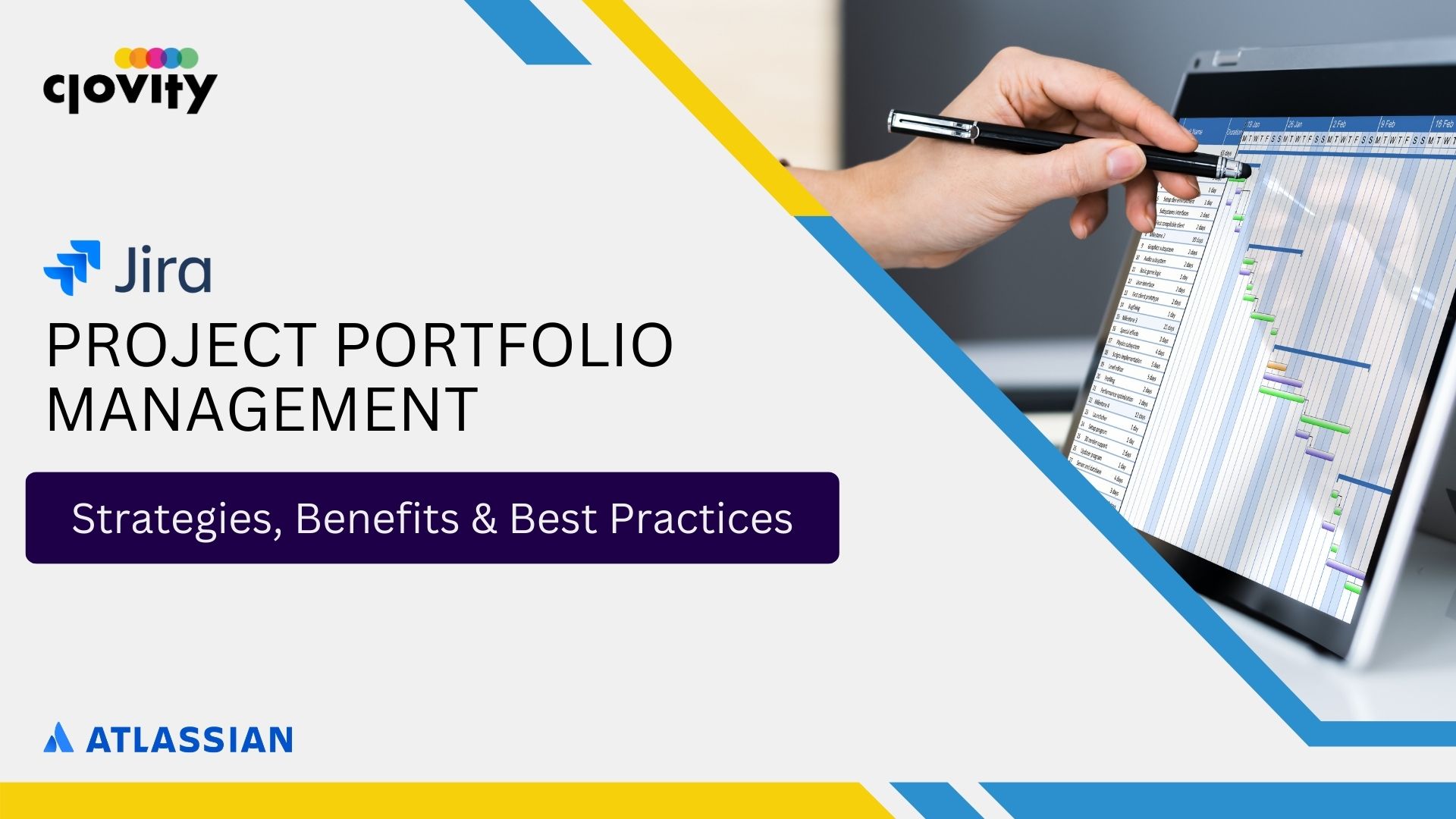In the evolving world of business, juggling multiple initiatives and keeping everything aligned with strategic goals can feel like managing a never-ending relay race. That’s where Project Portfolio Management (PPM) enters the picture, turning chaos into clarity. With the right approach—and tools like Jira—you can centralize your initiatives, allocate resources effectively, and gain a bird’s-eye view of your projects. Let’s explore how PPM helps businesses stay focused, adaptable, and successful.
What is Project Portfolio Management? 🤔
While project management hones in on individual projects, PPM ensures all projects in your portfolio serve the company’s broader goals. It involves continuous reviews, resource balancing, and strategic alignment to ensure everything works harmoniously.
Without PPM, companies often spread themselves too thin, overloading employees and straining resources. PPM steps in to prevent this, enabling smarter capacity planning and ensuring every initiative adds measurable value.
Why Does PPM Matter?
Ever find yourself drowning in projects that don’t move the needle? It’s a common struggle. PPM helps businesses focus on what truly matters by:
- Centralizing efforts: Gain a comprehensive view of all ongoing and upcoming initiatives.
- Improving resource use: Avoid overloading teams or misallocating funds.
- Enhancing decision-making: Access meaningful data to guide project prioritization.
- Managing risk: Mitigate challenges before they derail your projects.
Key Elements of Project Portfolio Management 🛠️
Effective PPM relies on a solid framework. Here are the cornerstones that keep everything standing tall:
1. Portfolio Governance
Set clear rules for selecting, reviewing, and prioritizing projects. These guidelines ensure that every project aligns with your organization’s long- and short-term goals.
💡 Pro Tip: Regularly revisit these rules to adapt to changing market conditions or company objectives.
2. Resource Allocation
Limited resources? Welcome to the club. PPM ensures that high-priority projects get the attention they deserve. This means teams work smarter, not harder.
3. Risk Management
From supply chain hiccups to tech disruptions, risks abound. PPM provides a framework to foresee challenges and devise company-wide responses that minimize the impact.
4. Performance Tracking
Measure success with metrics that matter. Whether it’s revenue impact or customer satisfaction scores, PPM keeps you informed. With tools like Jira, you can generate insightful status reports and monitor progress in real time.
Strategies for Successful PPM 🚀
Let’s make this actionable. Here are strategies that bring PPM principles to life:
1. Align Projects with Business Goals
Every project should contribute to a larger company objective. For example, a marketing automation initiative and an IT infrastructure upgrade might seem unrelated, but both aim to improve operational efficiency.
📌 Action Step: Create a success metrics checklist for every project. This ensures alignment and helps track outcomes effectively.
2. Prioritize Like a Pro
Not all projects are created equal. Use criteria like potential ROI, risks, and strategic value to rank them. A prioritization matrix or scoring model can help you visualize where to focus.
3. Maintain Balance
Too many high-risk projects? You could overstretch resources. Too few? Growth stalls. Strike a balance between ambitious and steady initiatives.
📌 Action Step: Run portfolio simulations to identify risks and rewards for better decision-making.
4. Keep Monitoring and Adapting
What worked six months ago may not work now. Regular reviews help you tweak priorities and reallocate resources.
Benefits of Embracing PPM 🌟
When companies commit to PPM, they experience more than just organizational tidiness. Here’s what’s in it for you:
1. Better Resource Utilization
PPM brings transparency to resource allocation, avoiding unnecessary bottlenecks. Managers gain a clearer understanding of where their teams and budgets are needed most.
2. Smarter Decisions
Data-driven insights take the guesswork out of project planning. PPM frameworks let you capitalize on trends and adapt faster to market needs.
3. Proactive Risk Management
Why wait for a problem to escalate? PPM lets you mitigate risks at the portfolio level, safeguarding your company’s bottom line.
4. Enhanced Collaboration
With PPM, cross-functional teams align under shared objectives, leading to stronger cooperation and faster results.
Best Practices for PPM Success 🏆
Introducing PPM into your organization doesn’t have to feel overwhelming. Follow these best practices to ensure a smooth transition:
1. Establish a Framework
Define project selection criteria and build a roadmap that orients projects toward overarching goals.
2. Use Reliable Tools
Sophisticated PPM tools like Jira Plans (previously advanced roadmaps) make planning, scheduling, and tracking more seamless.
3. Build a Dedicated Team
Successful PPM relies on a capable team. Clearly defined roles and open communication foster better outcomes.
4. Embrace Governance
Strong governance ensures compliance with company policies and keeps every initiative aligned with strategic objectives.
5. Iterate Continuously
Change is inevitable. Keep improving your PPM approach by analyzing past successes and failures.
How Jira Elevates PPM 🖥️
Jira doesn’t just manage projects; it provides the tools to excel at portfolio management. With features like advanced roadmaps, dependency mapping, and detailed reporting, you gain a single source of truth for all initiatives.
💻 Why Jira for PPM?
- Simplified compliance tracking
- Visualized dependencies for better planning
- Real-time updates to adapt to industry shifts
Ready to Get Started? 🎯
Managing a portfolio of projects doesn’t have to feel overwhelming. With PPM principles in place and Jira by your side, you can bring structure to the chaos and keep every initiative aligned with your company’s goals.
📧 Contact us today at sales@clovity.com or visit atlassian.clovity.com. Clovity is proud to be a Gold Solution Partner with Atlassian. Let’s build something amazing together! 💡


